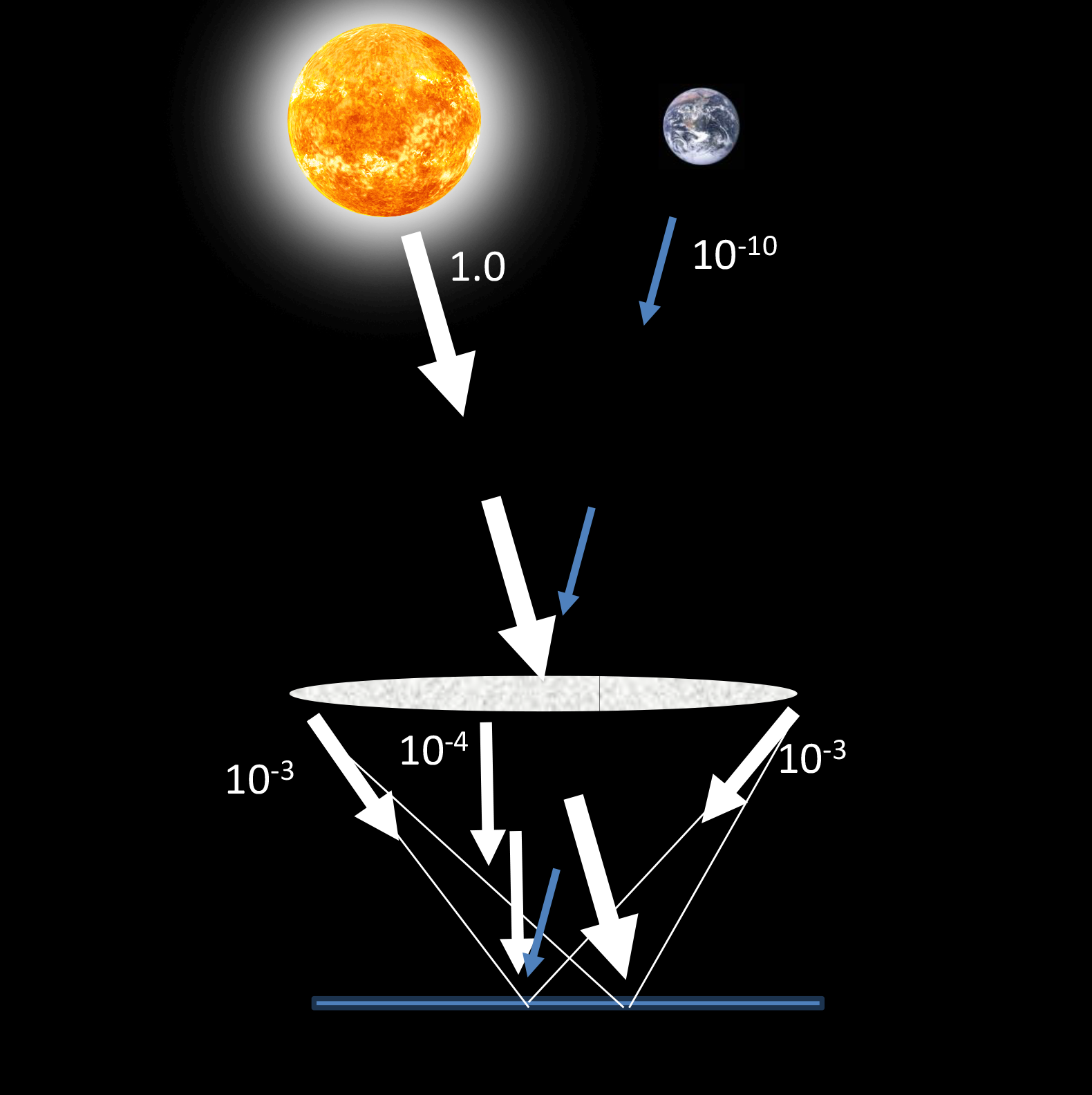


Credit: NASA
What is Starshade?

Starshade: How it Works
Starshade is a giant specially shaped screen tens of meters in diameter that formation flies tens of thousands of km from a space telescope. Starshade blocks out the starlight so that only planet light enters the telescope. This means the starshade and telescope can be high throughput and broad band, enabling spectra to identify an Earth 2.0.

Image Credit: NASA
Starshade vs internal telescope occulters
Starlight must be suppressed, either interferometrically or by an occulter, to allow exoplanet detection. Occulters that are internal to the telescope are called coronagraphs. Occulters that are external to the telescope are called starshades.
Starshade
The Starshade flies in formation with a distant space telescope to block out starlight before the planet light enters the telescope. Designed to block out starlight, making sure that less than 0.0000000001 starlight is left over, so that only a planet’s light enters the telescope.
Coronagraph
Because the coronagraph is inside the telescope, the planet and starlight are mixed and deflect off of imperfections in various optical surfaces inside the telescope and inside the coronagraph instrument. As a result the telescope has to be very, very stable in order to make the light blocking work once the star and planet light mixed together.



To plan for your breakthrough discoveries in Exoplanet science and find out more about how Starshade works, fill in the form below.

Image Credit: NASA

Despite tremendous progress in exoplanet discovery, a true Earth twin remains out of reach.
Starshade will benefit from knowing which stars Earth-mass planets are orbiting. But until our planet-discovery methods can overcome persistent challenges, Starshade an also detect another Earth.
Earth is a whopping 10 billion times fainter than the Sun. Our telescopes and detectors cannot handle the dynamic range. Another Earth would be completely overwhelmed by the starlight.
Starshade blocks out starlight so that only the planet light enters the telescope. Thus, out of all the options, Starshade enables the highest throughput in the broadest band possible when it comes to analyzing the atmosphere of another planet.
By observing an exoEarth atmosphere, we can search for water vapor, an indication of surface liquid water oceans that can support life. We can also search for signs of life, by way of biosignature gases.
Credit: NASA